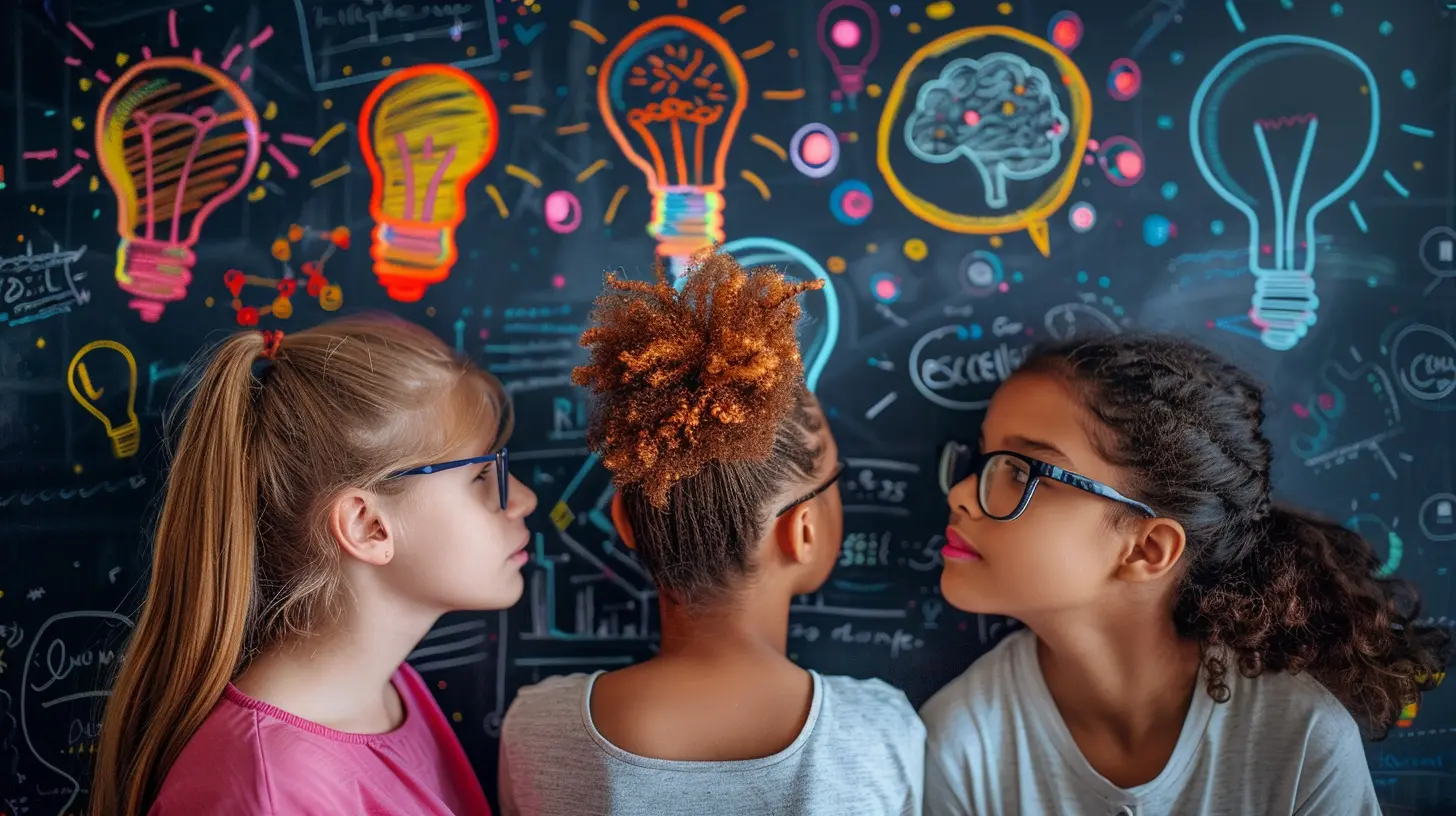Fostering Autonomy in Learners for Long-Term Success
28 June 2025
Learning is a lifelong journey, and one of the best gifts we can give students is the ability to guide their own learning process. Think about it—would you rather teach someone to fish so they can eat forever or just hand them a meal for the day? Fostering autonomy in learners sets them up for success, not just in school but in life itself.
When students take charge of their learning, they become more engaged, confident, and self-motivated. But how exactly do we empower them to be independent? Let’s dive into what autonomy in learning truly means and how we can cultivate this invaluable skill.

What Is Learner Autonomy?
Learner autonomy is the ability to take responsibility for one’s own learning. It means students actively participate in setting goals, choosing strategies, and evaluating progress. Instead of waiting for instructions, autonomous learners take initiative—they ask questions, seek out resources, and push themselves to improve.But autonomy doesn’t mean learning alone. It’s about knowing when to seek help, how to manage time effectively, and being accountable for personal growth. It’s the perfect balance between independence and collaboration.

Why Is Autonomy Important in Learning?
Fostering autonomy in learners has countless benefits. Let’s break it down:- Boosts Motivation: When students have control over how they learn, they’re more invested in the process. Who wouldn't be more excited to learn when they get to choose their own path?
- Develops Lifelong Learning Skills: The ability to learn independently prepares students for the real world, where they won’t always have someone guiding them.
- Encourages Critical Thinking: Autonomous learners don’t just memorize facts; they analyze, evaluate, and solve problems creatively.
- Enhances Confidence: When students successfully direct their own learning, their self-belief skyrockets. They realize they are capable of achieving goals on their own.
Clearly, autonomy isn’t just a nice-to-have skill—it’s essential for long-term success.

How to Foster Autonomy in Learners
So, how do we help students take ownership of their learning? Here are some tried-and-true strategies that can make a real difference.1. Encourage a Growth Mindset
Before independence can thrive, students need to believe they’re capable of growth. This is where a growth mindset comes in—the belief that intelligence and abilities can be developed with effort and perseverance.- Praise effort over outcome: Instead of saying, “You’re so smart,” try, “I love how hard you worked on this!”
- Teach the power of “yet”: If a student says, “I can’t do this,” encourage them to add “yet” to the end of that sentence.
- Normalize challenges: Let students know that struggling is a natural part of learning, not a sign of failure.
When students embrace challenges instead of fearing them, they become more willing to take control of their learning.
2. Give Students Choices
Nobody likes to be micromanaged, and students are no different. Giving them choices—whether big or small—makes them feel empowered and responsible for their learning.- Allow students to choose between different assignments or projects.
- Let them decide how they want to present their work—whether it’s a video, a slideshow, or a written report.
- Give them the freedom to select reading materials that interest them.
It’s all about giving them a say in their education, which boosts engagement and ownership.
3. Teach Goal-Setting Skills
Autonomy doesn’t mean aimlessly wandering without direction. Teaching students how to set and achieve their own goals helps them stay focused and motivated.A simple approach is using SMART goals:
- Specific – Define exactly what they want to achieve.
- Measurable – Set a way to track progress.
- Achievable – Ensure the goal is realistic.
- Relevant – Make it personally meaningful.
- Time-bound – Set a deadline for completion.
Helping students break big goals into smaller steps makes the process more manageable and boosts their confidence with each milestone.
4. Promote Self-Reflection
Encouraging students to reflect on their learning helps them recognize their strengths and areas for improvement. This turns them into active participants in their education rather than passive receivers of information.Some ways to foster self-reflection include:
- Journaling about what they learned each day.
- Answering reflection questions like “What was the most challenging part of this lesson?” or “What strategy worked best for me?”
- Peer discussions where they share insights and challenges.
By regularly reflecting, students become more aware of their learning habits and how to improve them.
5. Provide Guidance Without Spoon-Feeding
It’s tempting to step in and rescue students when they struggle, but doing so too often can hinder their independence. Instead of giving immediate answers, try:- Asking guiding questions: “What do you think you should do next?”
- Encouraging problem-solving: “Can you break this problem into smaller parts?”
- Redirecting them to resources: “Where can you find more information on this?”
By nudging students toward finding solutions on their own, you help them develop resilience and problem-solving skills.
6. Build a Supportive Learning Environment
A safe and encouraging learning space is crucial for fostering autonomy. When students feel supported, they’re more willing to take risks and experiment with their learning.- Celebrate progress, not just perfection.
- Encourage collaboration and peer learning.
- Create an environment where mistakes are seen as opportunities to grow.
An atmosphere of trust and encouragement makes all the difference in developing independent learners.
7. Introduce Project-Based Learning
One of the best ways to promote autonomy is through project-based learning (PBL). This approach allows students to explore topics deeply and take responsibility for their research, planning, and execution.For example:
- Instead of a traditional history lesson, have students create a documentary about a historical event.
- In science class, let them design their own experiments to test hypotheses.
- Have them develop a passion project on a topic of their choice.
Project-based learning gives students real-world experiences that require self-direction, creativity, and problem-solving—all essential life skills.
8. Encourage Digital Literacy and Self-Directed Research
In today’s information-rich world, knowing how to find, evaluate, and use information is crucial. Teaching students digital literacy helps them become independent learners who can seek out knowledge on their own.- Show them how to use reliable sources for research.
- Teach basic fact-checking skills to avoid misinformation.
- Encourage them to explore online courses, educational videos, and podcasts.
When students know how to access information effectively, they gain the confidence to learn beyond the classroom.

The Lasting Impact of Learner Autonomy
Fostering autonomy in learners isn’t just about making school more engaging—it’s about preparing them for life. When students develop the ability to manage their learning, they become self-reliant, adaptable, and eager to grow. These traits stay with them long after they leave the classroom and help them thrive in any career or personal endeavor.By encouraging choice, goal-setting, self-reflection, and problem-solving, we empower students to take ownership of their education. And when they do, the sky’s the limit!
So, let’s shift the focus from simply delivering knowledge to empowering learners to seek knowledge themselves. Because at the end of the day, the best learners aren’t just those who absorb information—they’re the ones who know how to chase it.
all images in this post were generated using AI tools
Category:
Educational PsychologyAuthor:

Eva Barker
Discussion
rate this article
1 comments
Theodora Edwards
Teaching kids independence: because one day they’ll need to find their own socks!
July 7, 2025 at 4:16 AM

Eva Barker
Absolutely! Encouraging independence, even in small tasks like finding socks, builds confidence and problem-solving skills that are essential for long-term success.


